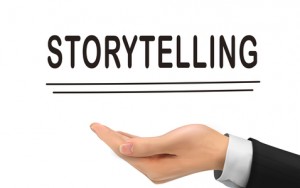 Telling a meaningful story in—one that captures the imagination and interest of a patient—is best done face-to-face. Storytelling in healthcare requires preparation and practice, but the payoff is greater case acceptance, better compliance, and best of all, improved outcomes.
Telling a meaningful story in—one that captures the imagination and interest of a patient—is best done face-to-face. Storytelling in healthcare requires preparation and practice, but the payoff is greater case acceptance, better compliance, and best of all, improved outcomes.
 Telling a meaningful story in—one that captures the imagination and interest of a patient—is best done face-to-face. Storytelling in healthcare requires preparation and practice, but the payoff is greater case acceptance, better compliance, and best of all, improved outcomes.
Telling a meaningful story in—one that captures the imagination and interest of a patient—is best done face-to-face. Storytelling in healthcare requires preparation and practice, but the payoff is greater case acceptance, better compliance, and best of all, improved outcomes.
One example: It’s standard procedure at particular specialist’s office to present the patient with a 20-minute video about all the standard facts, figures and drawings related to periodontal disease. The video’s core message is that there’s a laser treatment available.
As patient information videos go, this one was somewhat informative, but overly clinical, much too long, and bottom-line…boring. This illustration happens to be dental, but the same shortcoming is, unfortunately, alive and well in many medical and surgical offices. There was no engaging story, told person-to-person, that connected the prospective patient with the personal benefits that they might expect after treatment.
Pixar’s rules of storytelling…
In the world of storytelling magic, some of the best how-to secrets are available to doctors via Pixar Studios. You don’t need to be making an animated feature film (like Toy Story, Finding Nemo or Wall-E) to learn from the “22 Pixar Rules” for creating appealing stories and apply them to healthcare. Here are a couple slices to illustrate:
Pixar Rule #2: “You gotta keep in mind what’s interesting to you as an audience, not what’s fun to do as a writer. They can be very different.” In our periodontal example, the video was a lot about “how it’s done,” perhaps because that’s what dentists know and what’s interesting to dentists. But the patient/viewer saw almost nothing about the positive, “what you get.”
What’s interesting to the audience is how the treatment “beings them happiness.” In short, the words and images detailed the process, where a well-told story would communicate a perspective of benefits or results.
Pixar Rule #16: “What are the stakes? Give us reason to root for the character. What happens if they don’t succeed?” In a doctor-to-patient story, the (negative) consequences of inaction are important and put the (positive) benefits in a desirable perspective.
Providing a patient with sufficient information—enough to make an informed healthcare decision—is more powerfully and effectively communicated in the context of a compelling story. People relate to, and are engaged by, stories far more readily than process details or facts and figures.
For a broader perspective on how to become a better storyteller, our previous installments in this series include: 6 Secrets: Making Your Hospital Storytelling Great, and Emotional Transportation: Winning Patient Compliance and Improving Outcomes with Purposeful Storytelling.
“The human species thinks in metaphors and learns through stories,” observes American writer and cultural anthropologist Mary Catherine Bateson. And that may be why purposeful storytelling can be a doctor’s strongest medicine.
The post Pixar’s Magic: Storytelling is a Doctor’s Strongest Medicine appeared first on Healthcare Success.






